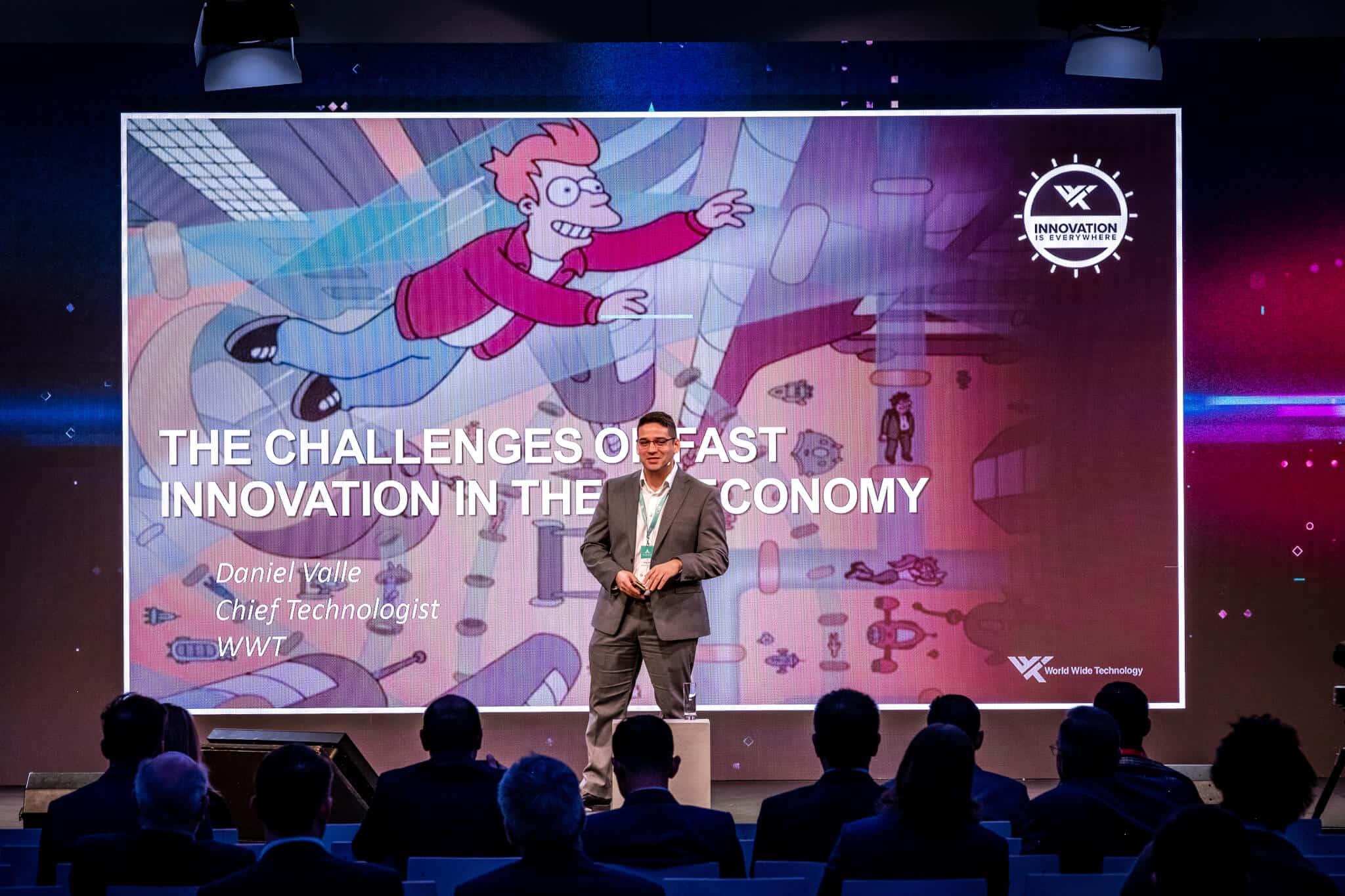If you don’t know World Wide Technology (WWT), pull out your phone and look them up—by the way, they’re partially responsible for you being able to do so. As global networks move into low-latency, crystal-clear 5G space, Chief Technologist @WTT Daniel Valle has all ye laymen’s backs in understanding how we get there. Here are 5 questions for the 5G expert.
(Featured Image: Daniel Valle, WWT / Image Credit © Arch Summit)
What is World Wide Technology?
WWT is a privately-owned technology solution provider and systems integrator. We spent 30 years amassing business supply chain knowledge. In the past 10 years, we’ve become a leader in helping suppliers and companies achieve business outcomes by making smart technology decisions faster.
By the numbers, we generate more than $11 billion in revenue yearly and employ over 5,000 people worldwide. We’ve invested more than $500 million in our Advanced Technology Center (ATC) to help customers test their solutions. The ATC features hundreds of OEMs and thousands of ecosystem partners. Dell and Cisco are our largest partners. We work with some of the largest service provider companies in the world.
What is the role of a Chief Technologist?
My role is two-fold. The first task is to run all technology and consulting engineering in our London offices, managing a group of 50 people. We’re focused on delivering consulting to local and international clients. The second is to provide thought leadership on technology and its role in the future of service providers’ go-to-market strategy. It’s exciting—I get to keep up with developing technologies to predict future developments. In a nutshell, I ask the question: How should technology be consumed in the future? And how will this influence service providers?
“Once developed, 5G will be much cheaper to run because of its automated and virtualized nature.”
What is MobiledgeX?
In the 5G world, it will be super important to process compressed data at an incredibly fast rate. To do that, computing capacity is most important. MobiledgeX is middleware that helps developers get access to computing power when the cloud is simply too far away.
This is not the case with 4G, which cannot support the bandwidth and response time needed to drive 5G-dependant services. That’s where MobiledgeX comes into play.
MobiledgeX is one of our partners and was included in our booth during the Arch Summit. If the Internet of Things is to be a major use case of the 5G-enabled world, MobiledgeX will be key in helping companies without the internal resources access mobile edge computing power to create IoT applications.
What was your role at the Arch Summit?
I was on the panel for consumer IoT the first day and also gave a keynote speech about challenges to fast innovation in the 5G era.
I’m concerned with the economic models new telcos will use to approach their business structures. Above all, we need to figure out how telcos will monetize their 5G investments. Given their current capacities, they need to find more cost-effective operational alternatives.
Once developed, 5G will be much cheaper to run because of its automated and virtualized nature. But before that, major service providers have some tall hurdles to get over, mainly high-level computing power.
Developers without this computing power will need to pay to use powerful computing services. Some people think it’s too early for this kind of “service for a service.” We will see how this turns out going forward. But if service providers, telcos included, don’t act now, it may be too late.
“Smaller, wealthy countries like Switzerland and Luxembourg have a huge competitive edge. A lot of the issues with expanding into the 5G landscape are related to operational cost and reach.”
Do you see unique value in Luxembourg as a country?
Smaller, wealthy countries like Switzerland and Luxembourg have a huge competitive edge. A lot of the issues with expanding into the 5G landscape are related to operational cost and reach. It’s super hard to change because you need a lot of devices. You need more bandwidth, more antennas, and more fibers. Just think about the complexity of running fibers across the United States. That’s a lot of work. Smaller countries have reachable potential because the scale is smaller.
Bonus: What are your priorities going forward?
My main focus is to help ensure customers are making the smartest technology decisions to best position themselves for success with 5G. In the next year, we will work to fully-test various use cases so that we can help solve real business problems. Innovating to identify and exploit new technologies to create valuable solutions is a must for telcos. We can help accelerate that process and then integrate those new solutions into the network, which will prove to be just as challenging in the disaggregated network.
There are tons of use cases among the many telcos worldwide. Well-known companies have developed solutions they want to roll out, so we need good architects and capable leaders to test, validate, integrate and deploy to market.
I believe we have the scale. It’s just a matter now of getting it done.
